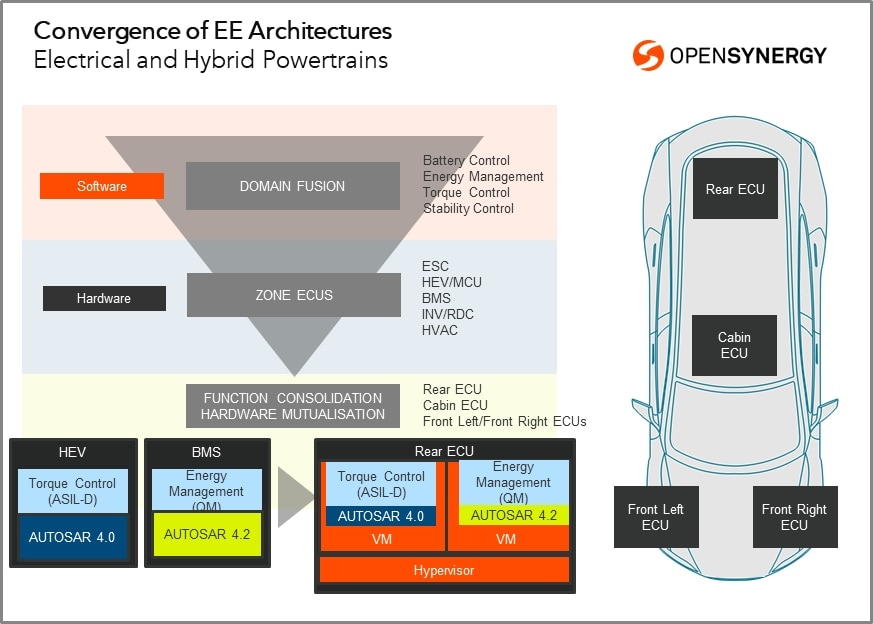I recently took the opportunity to catch up with OpenSynergy’s Stéphane Turlier about our collaboration on electrification architectures for the
GreenBox development platform. Stéphane is the director of the automotive integration competency centre for OpenSynergy. The team develops virtualization products for automotive-grade microcontrollers and delivers AUTOSAR® solutions to Tier1 and OEM customers.

Stéphane Turlier, OpenSynergy
NXP: What are the challenges that you see facing the industry to develop new architectures for electric vehicles?
OpenSynergy: We have been hearing about zonal ECUs for a while now and it looks like the grail of EE architectures to reduce BoM, wire harness and weight. There are still loads of technological challenges to achieve this, one of them is about combining reusability of software with diverse sources of contributors. A typical system integrator’s dream is to combine an in-house developed energy management software with the battery management software of the battery cell manufacturer and the torque control coming from another Tier1. Virtualization of the CPUs is a crucial building block to leverage when consolidating multiple applications.

Convergence of EE architectures: Electrical and hybrid powertrains
How are OpenSynergy and NXP partnering on this?
OpenSynergy uses
NXP S32S safety microcontroller
as our lead platform for the development of our first Arm Cortex-R-based hypervisor.
The powertrain demo created by NXP is a great use case as it requires high-performance and high-criticality software: the orange cables coming out the e-Motor will shout ASIL D to any system architect looking at it.
Many people are often put off by virtualization as they fear that they will lose on either performance or safety. With this demo we combine our hypervisor software with concrete field applications developed by NXP and using actual NXP hardware like the e-Motor. Put in the context of the GreeBox II, a very powerful toolkit to bootstrap any S32S development, we can talk to the industry from an end-user perspective.
In your opinion, why is virtualization important to electrification?

Electrification demo architecture: Four cores, five virtual machines
Electrification is not only about replacing the combustion engine by an electrical engine, it’s a permanent quest for simplification in the EE architecture as the application landscape is under an explosion of complexity. Virtualization provides further degrees of freedom to system integrators with little compromise on performance and very often helps improve overall safety. For this to happen, we need to hold our promises in terms of performance, safety and flexibility of virtualization.
I am really convinced that the S32S architecture developed by NXP has a great potential in that field and that people will be looking at using our hypervisor to get the most of this chip’s features.
Find out more at
Electrification.







